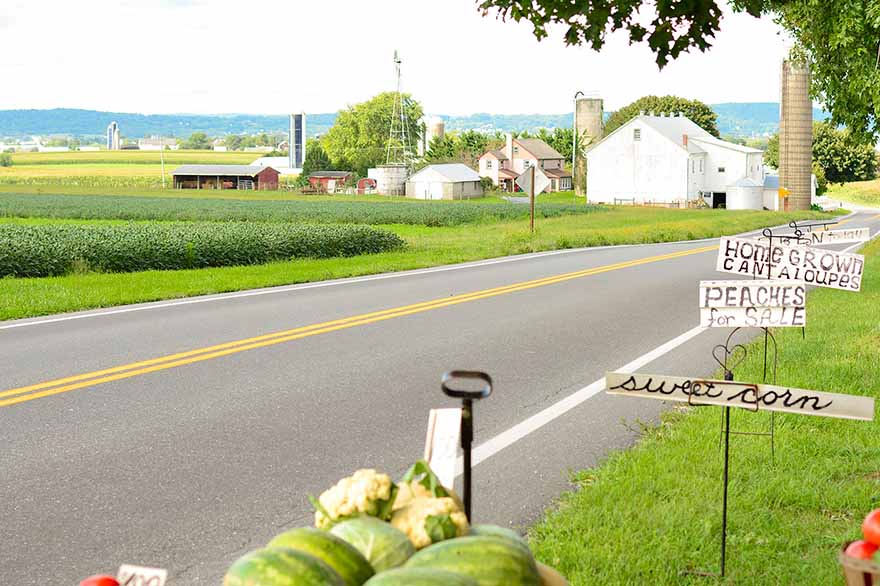Here in Lancaster County, over 40,000 Amish (pronounced Ah-mish, not Ai-mish) serve as living reminders of a quieter time, a time when the horse and buggy was the mode of transportation and families lived and died in the same small communities. The first Amish, so named for Jakob Ammann, arrived in Lancaster County and nearby Berks and Chester counties in the early 1700s to take part in William Penn’s “Holy Experiment” of religious freedom. Originally called Anabaptists, they came to America from Europe to escape religious persecution by both Protestants and Catholics. The county is now home to three Anabaptist groups called the Amish, Mennonite, and Brethren.
In 1525, after the Reformation, a group of Swiss Brethren felt that only adults should be baptized. They met secretly in a member’s home and confirmed their faith by re-baptizing each other as adults, even though they had been baptized as infants in the state church. Thus, they became known as Anabaptists, which means re-baptizers.
Because of their beliefs in adult baptism, non-violence, and separation of church and state, they were viewed as “radicals,” and thousands were tortured and killed in the following years. Nevertheless, the religion spread into other areas of Europe.
In time, the different Anabaptist groups became known as Mennists or Mennonites, after the greatest of the Anabaptist leaders, Menno Simons. It was in the late 1600s that Ammann broke away to form a group that more strictly adhered to the founding beliefs and practices of the first Anabaptists.
The differences between the various Amish, Mennonite, and Brethren groups are in their interpretations of the Bible, their uses of modern technologies such as automobiles and electricity, the values they place on education, their uses of English, and their degrees of interaction with outsiders.
The Amish believe that “worldliness” keeps one from being close to God, so they choose to live without many modern conveniences and technology, such as cars, television, videos, etc. Rather than use the electrical grid, they have bottled gas stoves and refrigerators.
They do not live in seclusion from the rest of the world. Amish farms can be seen interspersed with modern farms throughout the countryside, and there is much daily interaction between the Amish and the non-Amish (“English”) community. Contrary to popular belief, the Amish do not live the same way they did 300 years ago. They have adopted many things to make life easier, but are careful not to accept new technology without considering its effects on their family and community lifestyle.

